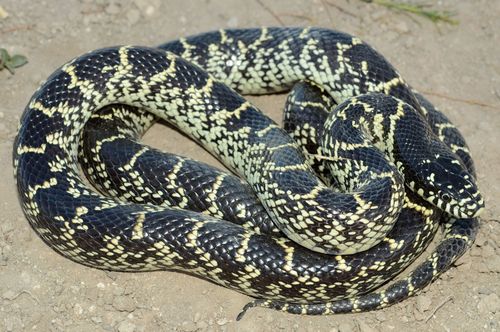
Desert Kingsnake
The desert kingsnake, Lampropeltis splendida, showcases a bold black and yellow pattern, thriving in dry southwestern U.S. habitats. Noteworthy for its immunity to rattlesnake venom, it plays a crucial role in controlling venomous snake populations, demonstrating nature's intricate balance and resilience.
12-20 years
Lifespan
Length: 91 - 122 cm
Size
Yellow, Black
Color
Low
Aggression
Least Concern
Conservation Status
Stable
Population Trend
Characteristics
Lampropeltis splendida, known as the desert kingsnake, inhabits arid regions in the southwestern United States. It displays a striking pattern of black and yellow bands, aiding in camouflage among desert flora. This non-venomous snake is noted for its ability to prey on venomous snakes like rattlesnakes, exhibiting a unique immune adaptation.
Distribution Range of the Desert Kingsnake
Lampropeltis splendida, commonly known as the desert kingsnake, is native to the southwestern United States and northern Mexico. It is predominantly found in the states of Arizona, New Mexico, Texas, and extends into the Mexican states of Chihuahua and Coahuila.
Desert Kingsnake's Habitat
Environmental Conditions
The desert kingsnake inhabits arid and semi-arid regions, typically in desert scrub, grasslands, and open woodlands. These areas are characterized by hot, dry climates with sparse vegetation.
Ecological Niche
Lampropeltis splendida is a terrestrial species that plays a role as both predator and prey within its ecosystem. It primarily feeds on rodents, lizards, and occasionally other snakes, including rattlesnakes, thanks to its resistance to their venom. The species is adapted to a variety of microhabitats within its range, including rocky outcrops and sandy soils, where it can find cover and hunt for food.
Copyright @ Nature Style Limited. All Rights Reserved.
 English
English